OddCameras.com
Olympus Pen D3
The
Oympus Pen series is a brand name for half frame compact cameras from
1959 until the early 1980s by the Olympus Co, Tokio, Japan, an old
camera company. The original Pen was introduced in 1959. It was
designed by Yoshihisa Maitani and was the first half-frame camera
produced in Japan. It was one of the smallest cameras to use regular
35mm film. A series of Pen models followed, some easier to use with
automatic exposure.
The Pen D3 is one of these little half frame cameras, introduced in 1965. It is also designed by Yoshihisa Maitani
(who later created the OM-1 and the XA). It is based on the D2, but has an even more luminous lens of 1:1.7.
The main features are:
Lens: F.Zuiko 1:1.7 /32 mm, 6 elements in 5 groups, F1.7-16, min focus 0.8m
Shutter: Copal X, Speeds: 1/8 - 1/500s and B
Viewfinder: luminous frame, parallax indications
Light-meter: CdS, non-coupled
Film speeds: 10-400 ISO
Size: 108 x 67 x 50 mm, Weight: 400 g
Cds meter, non coupled, PC socket, tripod mount
Some photos:
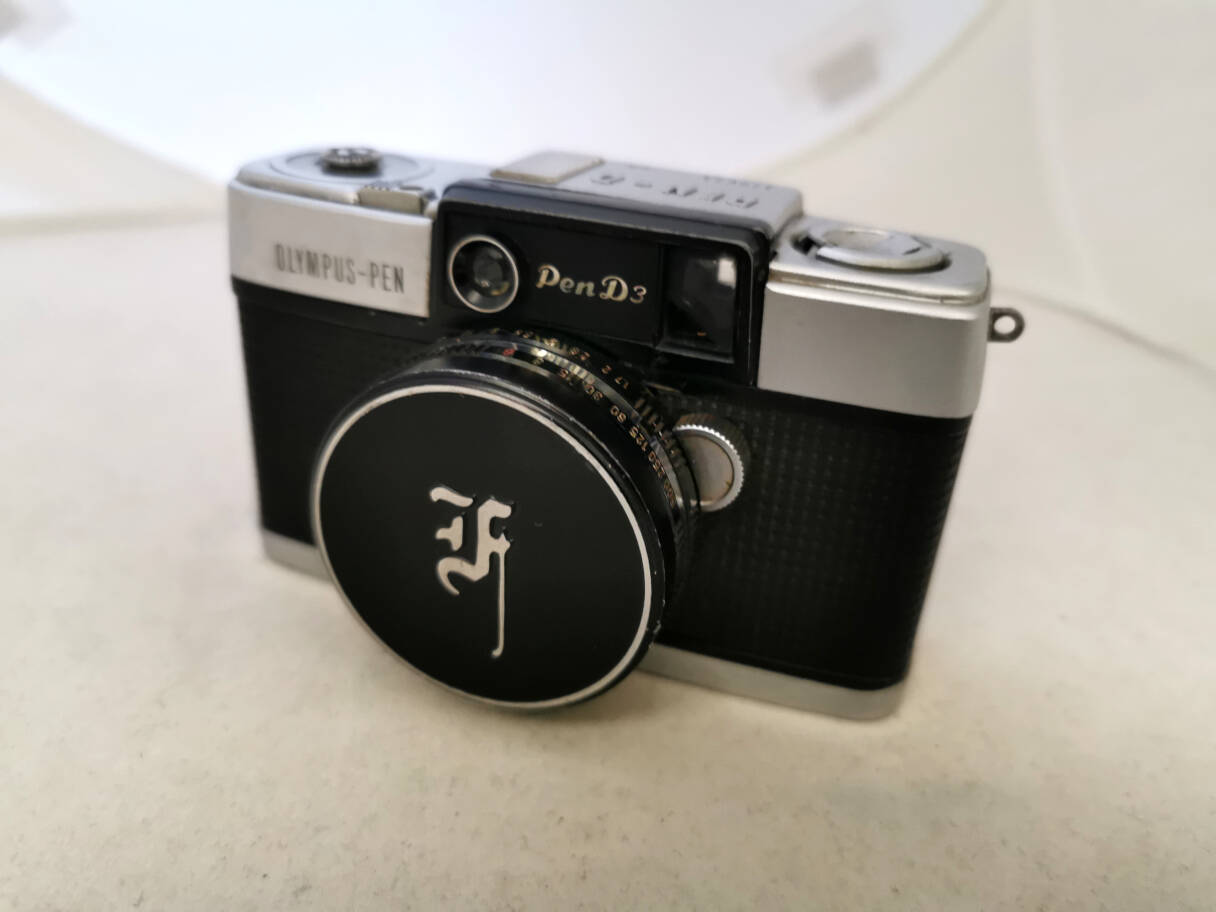
A
nice and stylish little camera. The iconic gothic letter F on the lens cap comes from a Pen F lens.
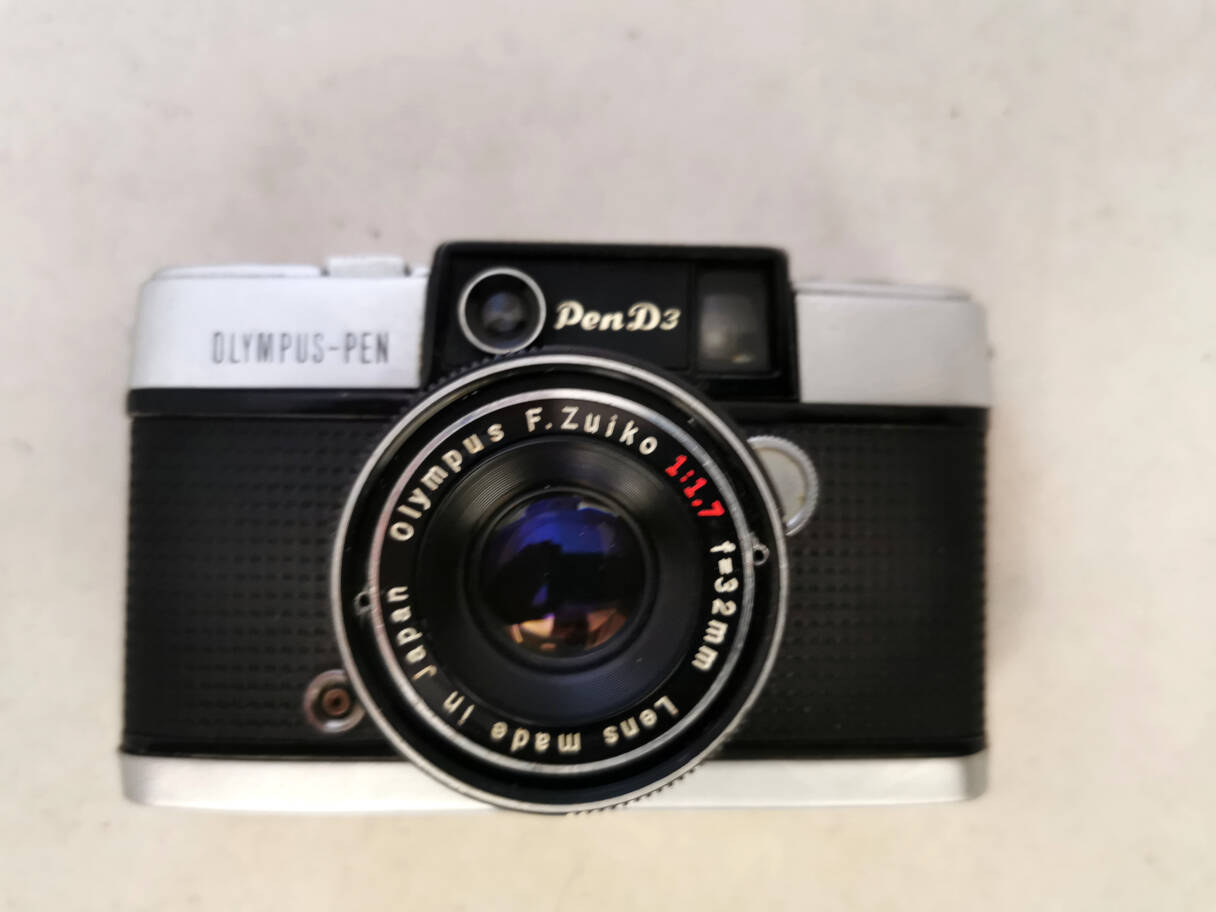
Camera
front. CdS cell, finder, distance setting tab and PC socket.
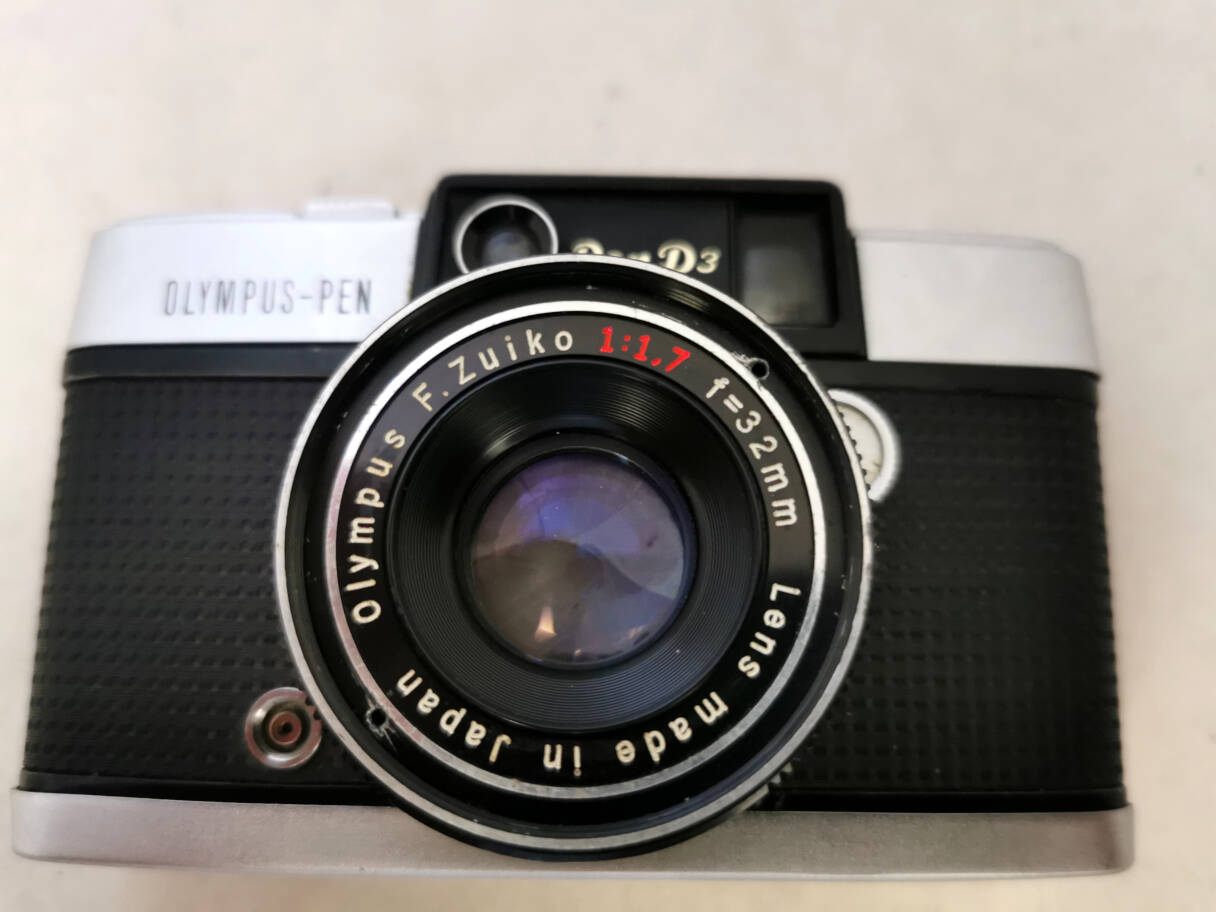
Lens front.

Camera
back. Viewer, little meter button, film advance thumbwheel.
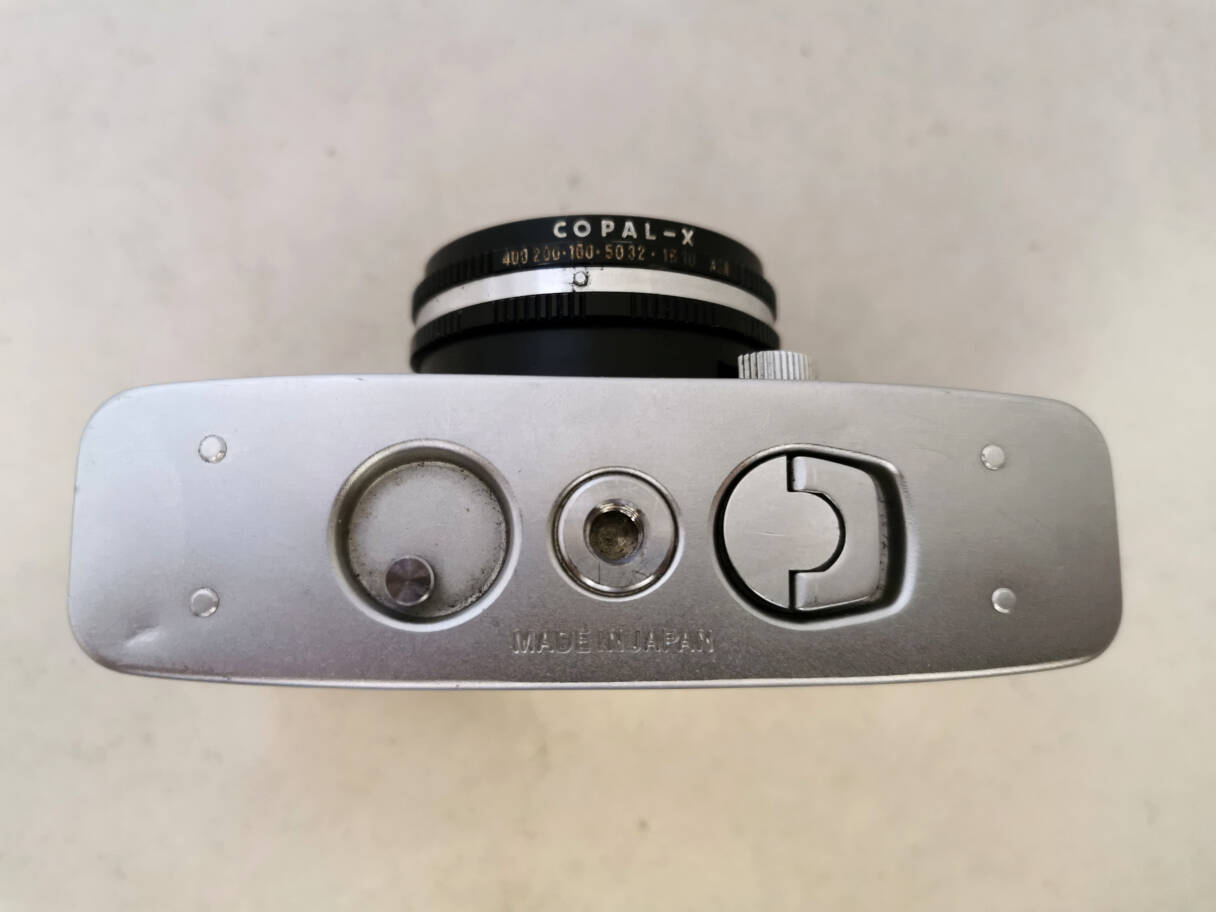
Camera
bottom. Rewind release, tripod socket and camera back opening mechanism. ISO setting on the lens barrel.
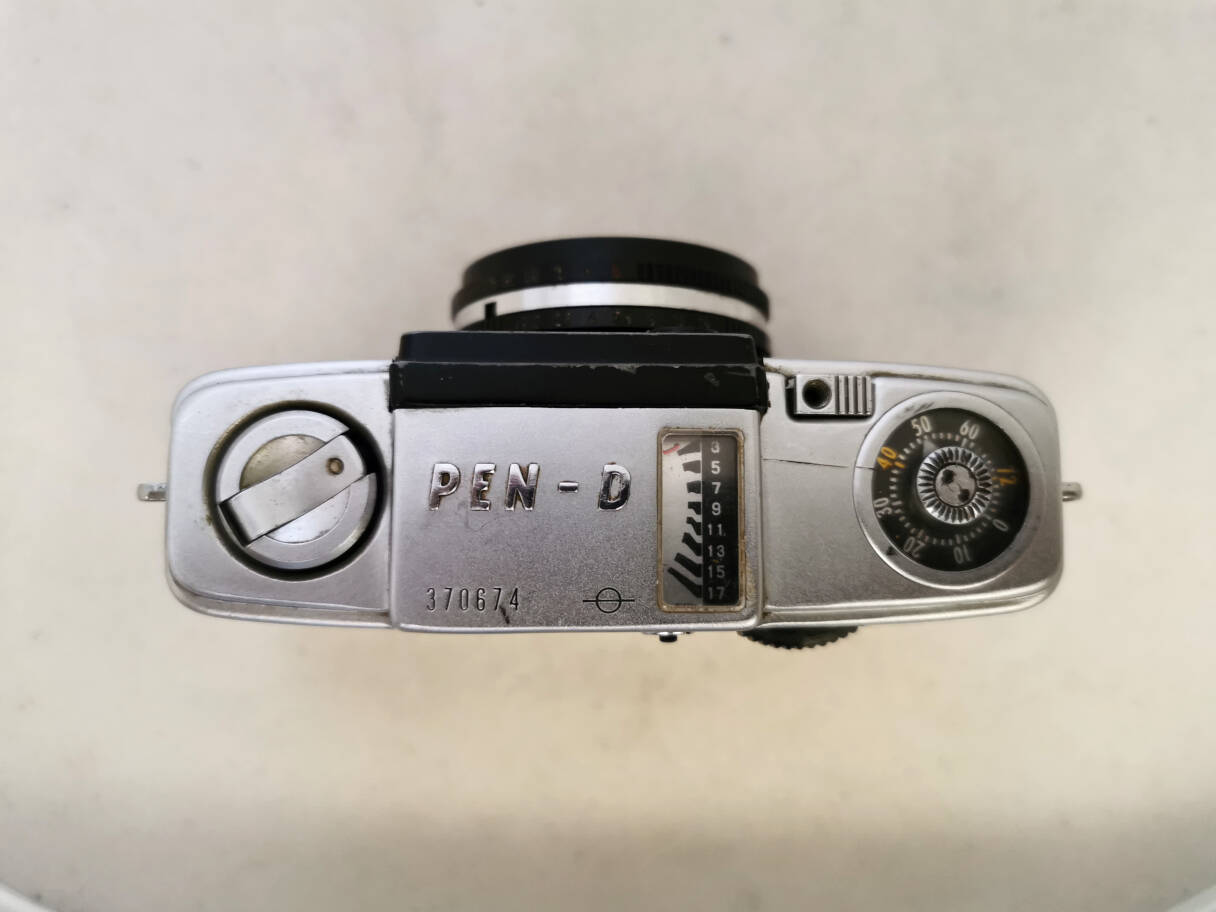
Seen
from above. Rewind, meter, shutter release and film counter.

The meter needle moves when you press the little button on the back. It gives EV system values.
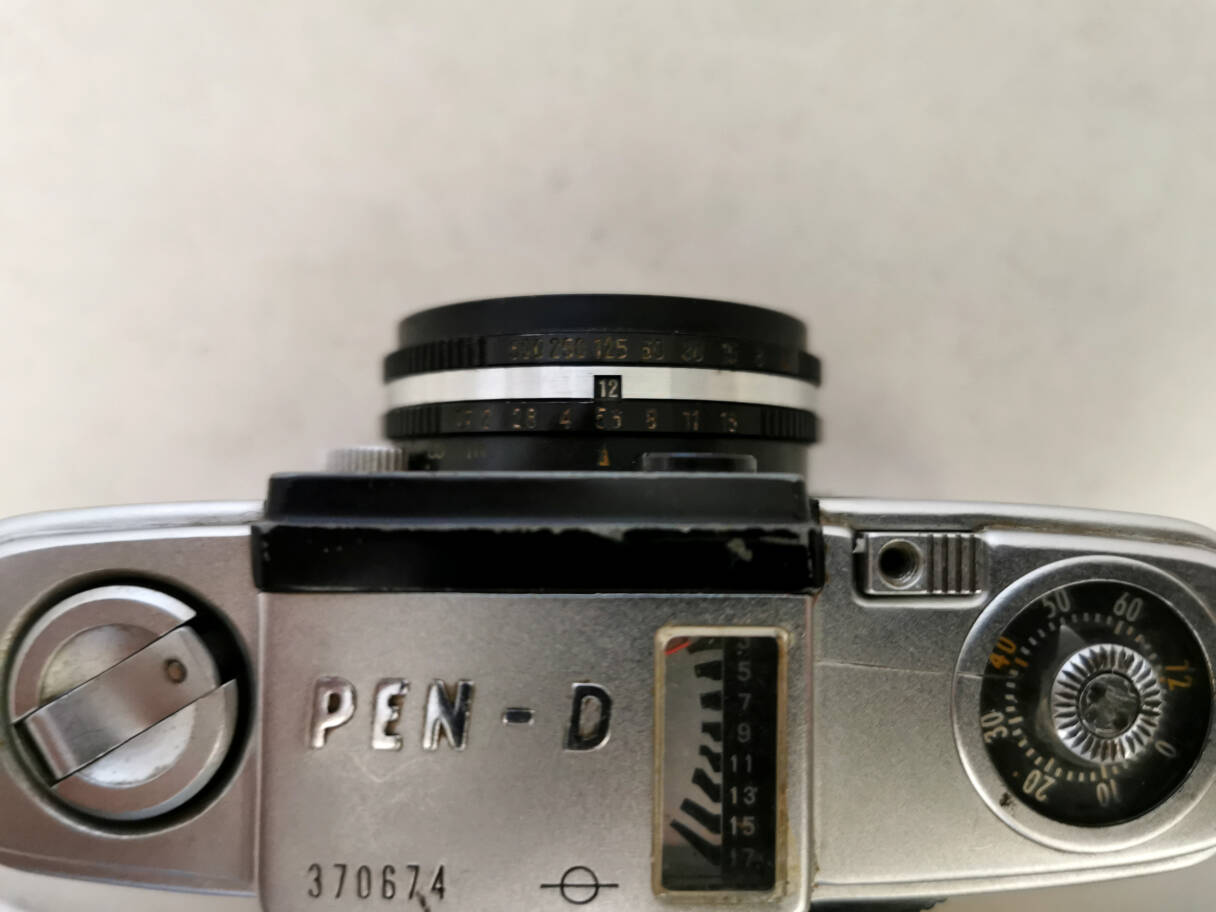
On the lens barrel: Speed and aperture setting. The lttle EV window
should show the value you read on the meter. If speed or aperture are
not convenient, you can grab both rings and change speed and aperture
without changing the EV setting.
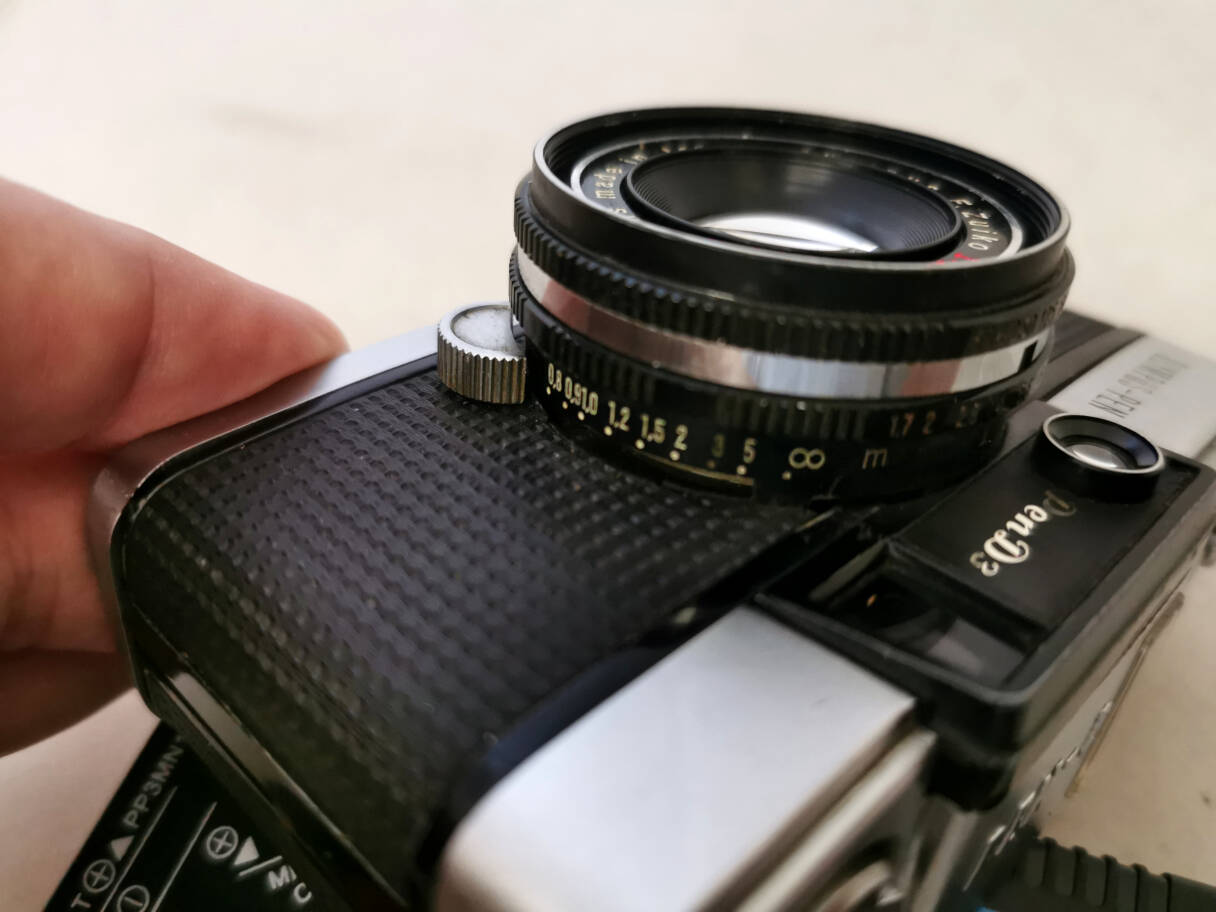
Distance scale. There are stops at 3m and 1.2m.
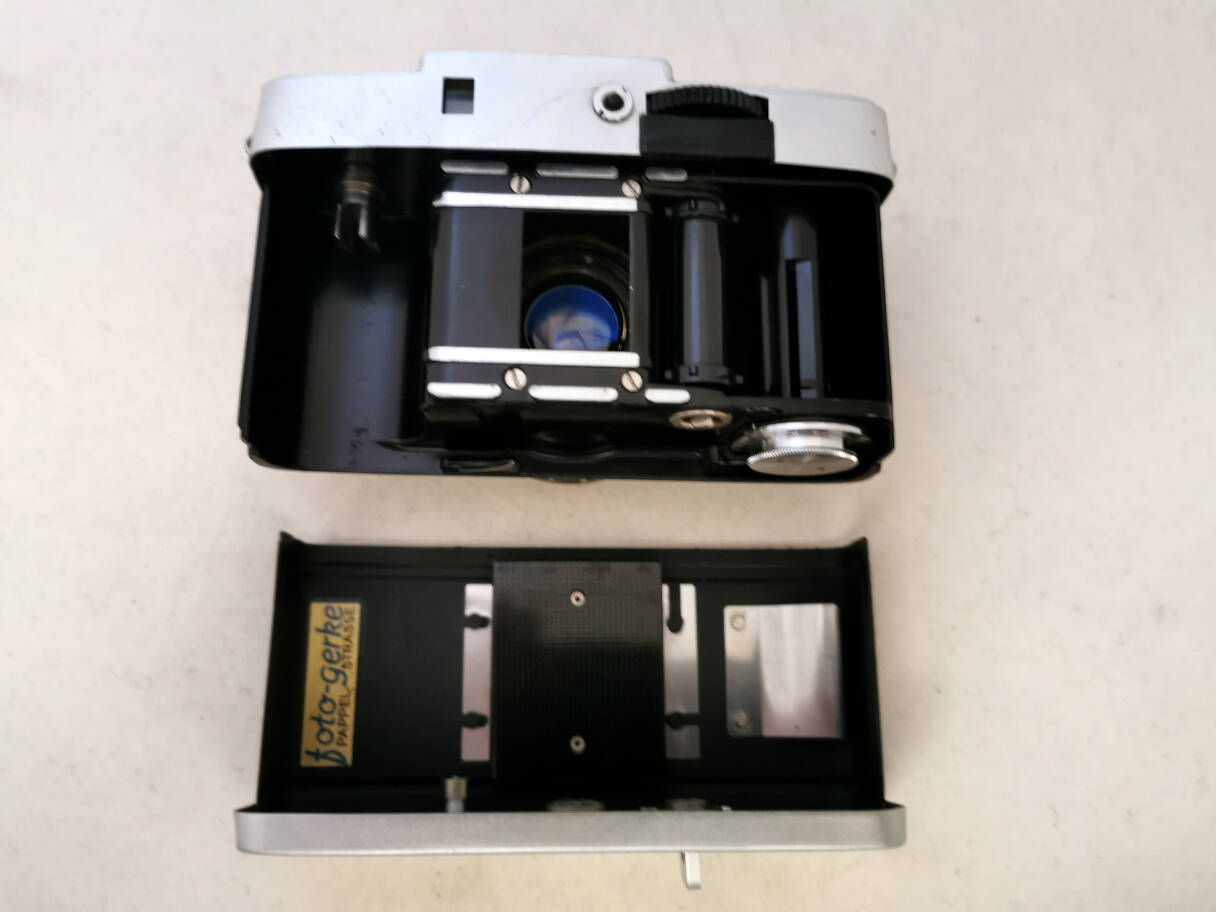
Back open.
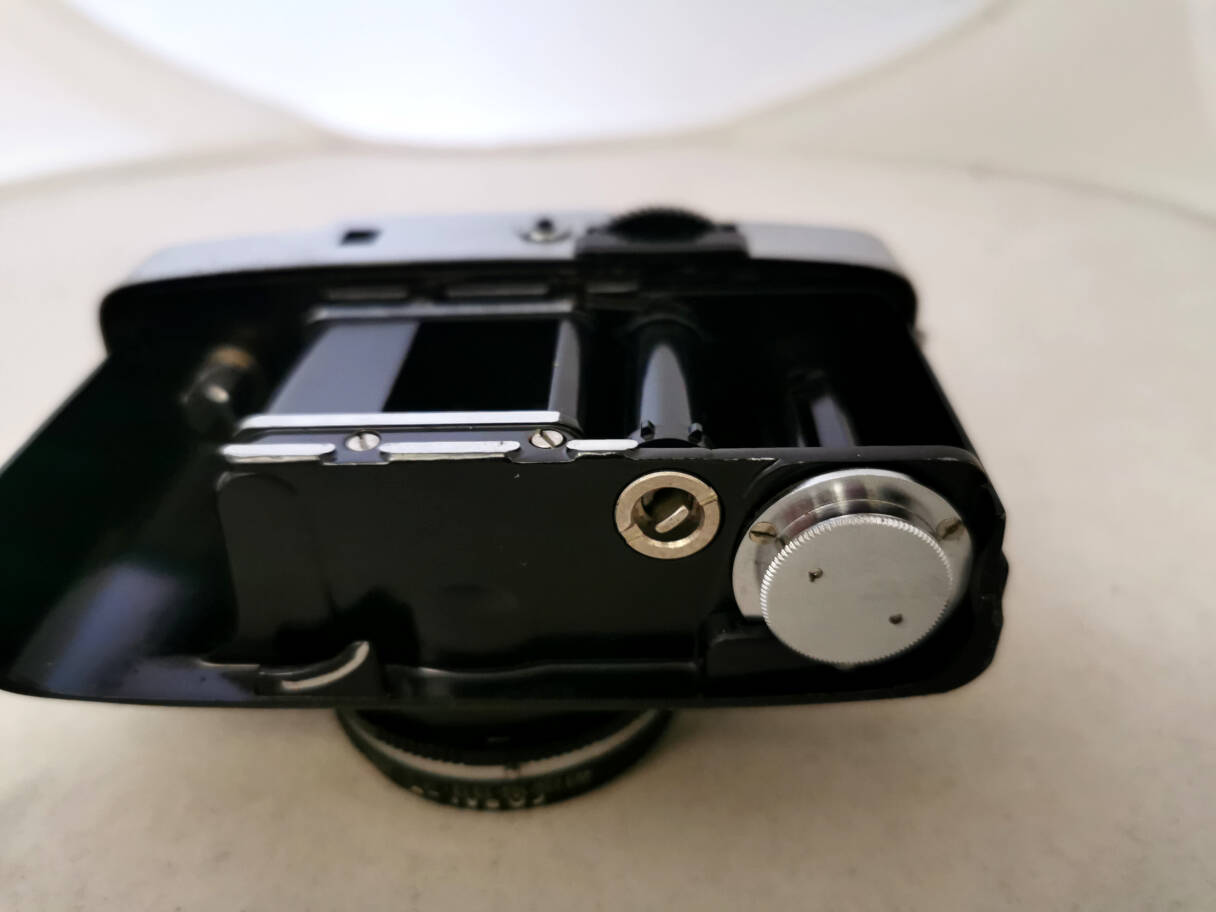
Battery
compartment, takes a PX675 mercury battery. There are replacements
available, see the bottom of the page. And there are loads of discussions about it.
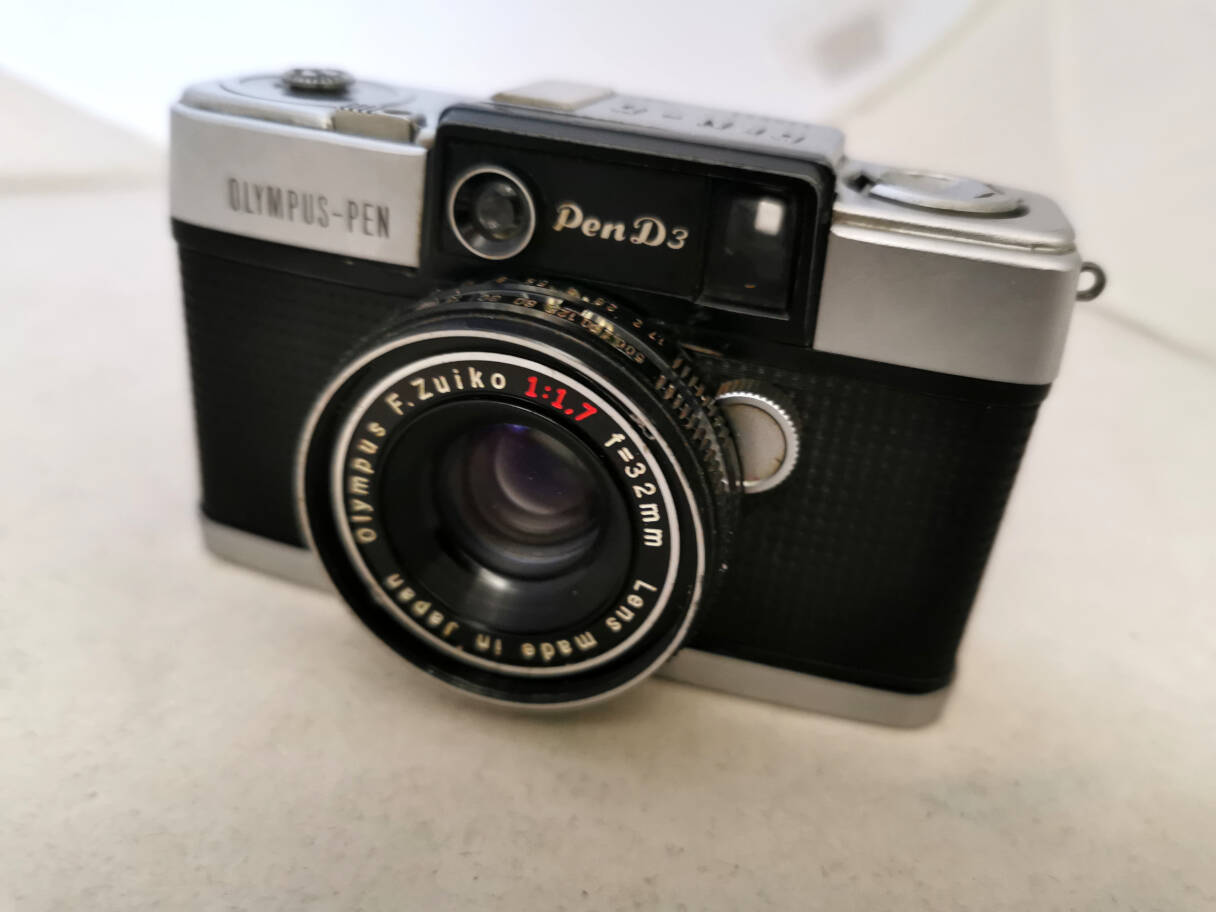
A really cute little camera with an extremely luminous lens.
This Pen series cameras are regarded as the best of the half frame cameras although
launched about 60 years ago. They are very nice and very small
cameras with very good lenses and most
still work nicely after so many years. Seen today's film prices, half
frames are sought after. This led to high prices for the top
models.
Handling is easy and logic. The D3 combines a top luminous lens and a meter in a very small body. In any case: it's a cute little wonder like the Pen FT, but much smaller.. I'm very fond of it.
There is a lot of discussion about the battery. I do not use slide film
except for stereo cameras. Modern negative film is easy within 1 or 2
apertures anyway. No problem with a new SR44 battery in this camera.
I have ordered
an adapter to 1.3 V for my Pen FT. So let us look at adapting the
camera to the 1.3 V of the mercury batteries that are no longer
available. With my Pen FT there is a 2 stop difference between a fresh
1.55 V battery and a 1.3 V battery. That's a lot. But it works well
with a used one of 1.45 V. No difference there and it lasts some
months. My Pen D3 from the same period has obviously a completely
different circuit. The meter only works if you push a button, so no
battery drain, and there is no difference between 1.3 V and 1.55 V. The
meter shows the same values.
If your camera shows a different reaction to 1.55 V, there are zinc/air
batteries that are sold sealed (they have tiny, tiny holes which let
air in to make them function), once you peel off the seal the reaction
starts and in most cases the battery will only last a few weeks.
However these batteries perform like mercury batteries, they stay at
the same level for a long period and then suddenly fade. They need some
minutes to work well after unsealing. Depending on your voltage meter,
they show a higher voltage, but this goes down once they are in the
circuit.
There are hearing aid zinc/air batteries 675 size, the size of the
original batteries. These cost next to nothing because they are
produced in large quantities. So putting these seems to be the best
solution in case of doubt.
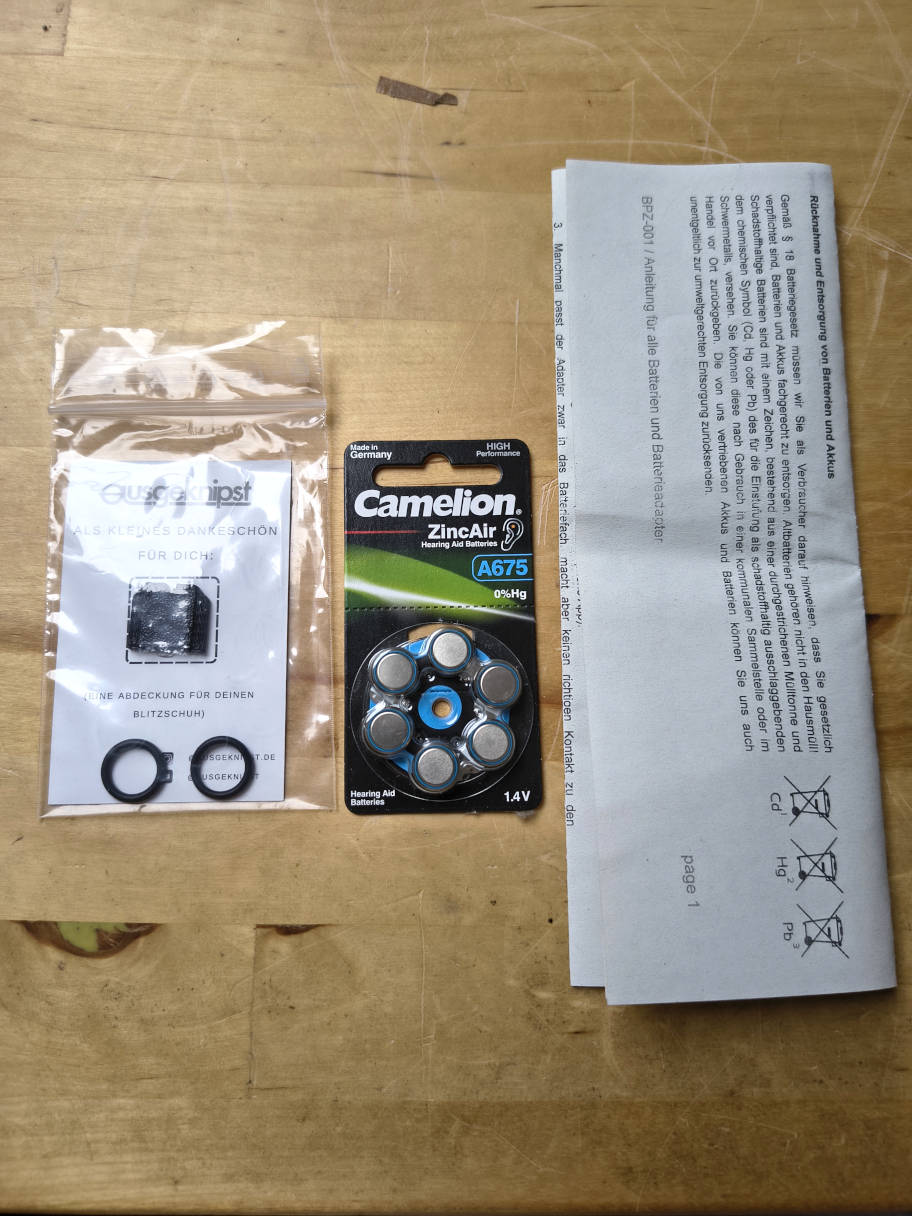
This is an adaption set for a Pen FT, which has bigger 625 batteries. A pack of 6 hearing aid 675 batteries is in the middle.
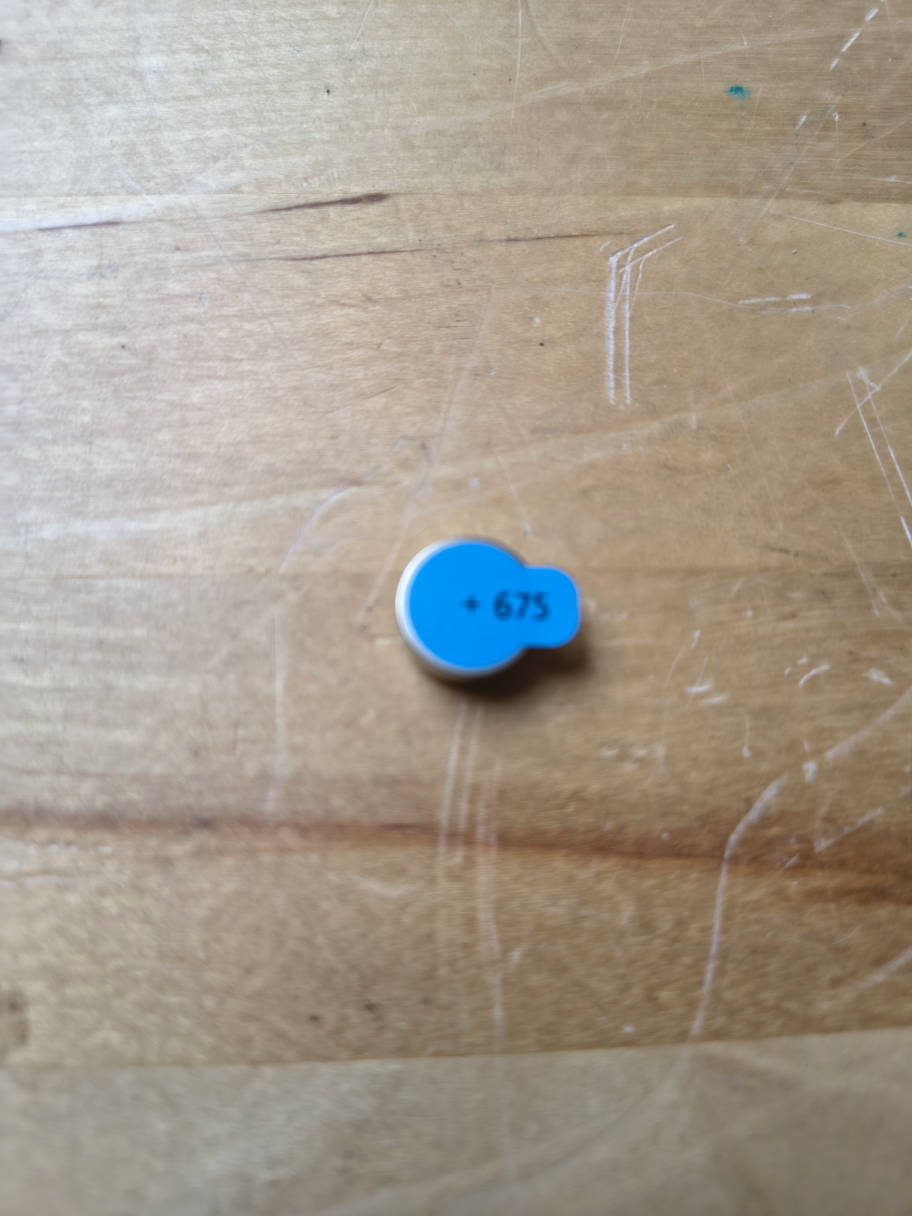
The seal, to be pulled off.
This really seems to be the easiest reliable solution. FYI: SR44
batteries are the size of 675 batteries. So these work as well in my
camera which ignores the higher voltage. If yours is more sensible to
the higher voltage, take a used one of about 1.45 V in case of.













